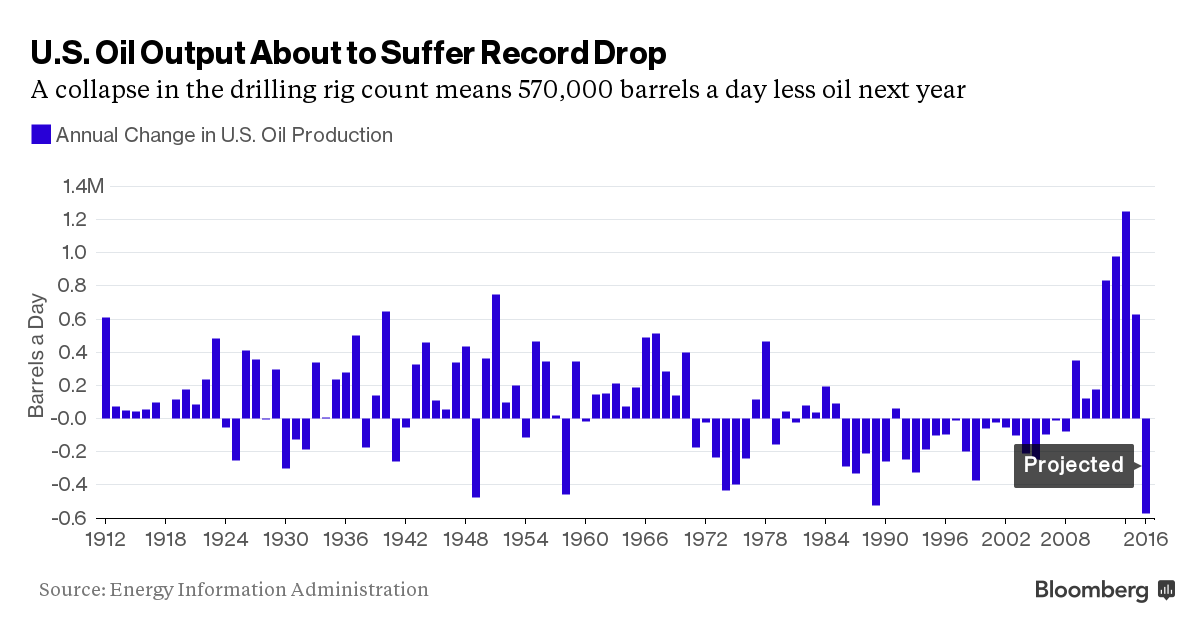As the Saudis commit financial jihad on U.S. oil production, our government sits here idle, complaining about the perplexities of building pipelines and creating tax loopholes for a solar industry that doesn’t stand a chance to displace the fossil fuel hegemony, any time soon.
About $99 billion in face value of high-yield energy bonds are trading at distressed prices, according to Bloomberg Intelligence analyst Spencer Cutter. The BofA Merrill Lynch U.S. High Yield Energy Index has given up almost all of its outperformance since 2001, with the yield reaching its highest level relative to the broader market in at least 10 years.
“You are going to see a pickup in bankruptcy filings, a pickup in distressed asset sales and a pickup in distressed debt exchanges,” said Jeff Jones, managing director at Blackhill Partners, a Dallas-based investment banking firm. “And $35 oil will clearly accelerate the distress.”
“Most companies have gone into shrinkage mode, saying their goal is to stay flat and make it through this market,” Raoul LeBlanc, an analyst with IHS Inc. in Houston, said. “The current price is unsustainable. Unfortunately, we have to sustain it for a while longer.”
Separately, Saudi Arabia, the great devil from the east, has over $630 billion in currency reserves. Although they’ve been running a deficit of $30-45 billion per annum, things are about to get colorful for them in 2016, with deficit estimates ranging from $100 to $200 billion, depending on the price of Brent.
Oil accounts for more than 90% of Saudi Arabia’s income.
If you enjoy the content at iBankCoin, please follow us on Twitter






Been saying this for months. Saudi Arabia went into the debt market last summer to fund spending. That should have raised some eyebrows. Many a petro state is going bust in 2016. How do you distract the plebs from their crumbling economies while creating a bid for crude oil? War.
House of Saud has 3 years to defeat the Bakken.
I’ll give it to them, they’ve got the Bakken and Canada about on their last legs. $20 oil will surely do the trick. Canada is pretty fucked too. Going long USD/CAD is probably something to consider.
Time is definitely on their side.
It wouldn’t if we extended tax breaks for domestic drillers and also put tariffs on overseas imports
Also, consensus seems to be that the high yield contagion will be contained to oil and gas. The experts trumpeting this are probably the same folks saying the subprime crisis would be contained as well. Why exactly would the junk bond crisis only permeate oil and gas? First of all, oil and gas accounted for most of the high paying jobs created since 2009. Secondly, 6 years of Fed cocaine surely made it’s way into the rest of the economy. There are some pretty junky looking stocks that rose solely on credit funded stock buybacks. Looking directly at $BBBY.
BBBY nets $200 mill per qt and has a debt/eq of 0.18.
Not feeling that one.
Yeah, should’ve clarified. Good example of the stock buyback frenzy and not high yield. I kind of conflated a couple of points in my post.
Buy oil the last week of the month into the first week. Then short aggressively weeks 2 & 3. This pattern has worked well. I believe the formulas for many debt covenants (correct term?) use the price of oil on the first of the month to calculate six month averages for the purpose of determining whether to extend credit.
Believe that this pattern will continue into 2016.